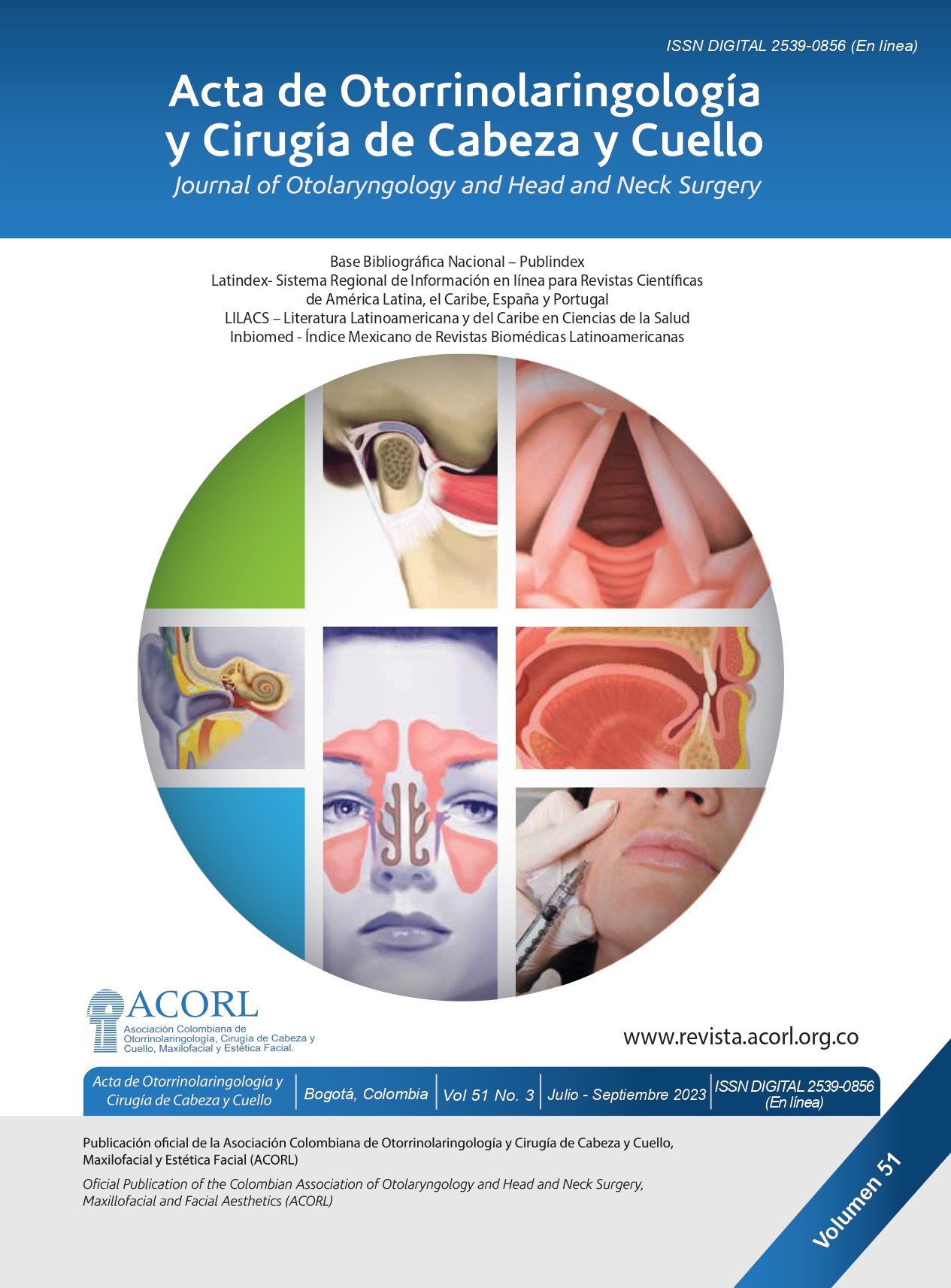Tumor de células gigantes de tejidos blandos del seno esfenoidal
Contenido principal del artículo
Resumen
Introducción: el tumor primario de células gigantes de tejido blando de bajo potencial maligno es un tumor raro. Se han reportado en varios sitios, incluyendo mama, glándulas salivales, pulmón, entre otros. En el cráneo representan el 1 % y afectan preferentemente al esfenoides y los huesos temporales con bajo potencial de transformación maligna. Caso: se presenta el caso de un paciente masculino de 27 años con disminución de agudeza visual izquierda rápidamente progresiva, con evidencia de defecto pupilar aferente izquierdo. La tomografía computarizada (TC) y resonancia magnética nuclear (RMN) muestran una lesión tumoral en topografía esfenoidal izquierda con extensión hacia el seno cavernoso del mismo lado que desplaza la hipófisis. Discusión: el objetivo es describir la frecuencia de la enfermedad y las características en su presentación, definir pautas para el abordaje, tratamiento y seguimiento; asimismo, establecer los factores pronósticos. Conclusiones: tumor de ubicación y presentación inusual.
Detalles del artículo
Sección

Esta obra está bajo una licencia internacional Creative Commons Atribución-CompartirIgual 4.0.
Este artículo es publicado por la Revista Acta de Otorrinolaringología & Cirugía de Cabeza y Cuello.
Este es un artículo de acceso abierto, distribuido bajo los términos de la LicenciaCreativeCommons Atribución-CompartirIgual 4.0 Internacional.( http://creativecommons.org/licenses/by-sa/4.0/), que permite el uso no comercial, distribución y reproducción en cualquier medio, siempre que la obra original sea debidamente citada.
eISSN: 2539-0856
ISSN: 0120-8411
Cómo citar
Referencias
Tuluc M, Zhang X, Inniss S. Giant cell tumor of the nasal cavity: case report. Eur Arch Otorhinolaryngol. 2007;264(2):205-8. doi: 10.1007/s00405-006-0143-6.
Lentini M, Zuccalà V, Fazzari C. Polypoid giant cell tumor of the skin. Am J Dermatopathol. 2010;32(1):95-8. doi: 10.1097/ DAD.0b013e3181b34724
Righi S, Boffano P, Patetta R, Malvè L, Pateras D, De Matteis P, et al. Soft tissue giant cell tumor of low malignant potential with 3 localizations: report of a case. Oral Surg Oral Med Oral Pathol Oral Radiol. 2014;118(5):e135-8. doi: 10.1016/j. oooo.2014.03.013
Burnam JA, Benson J, Cohen I. Giant cell tumor of the ethmoid sinuses: diagnostic dilemma. Laryngoscope. 1979;89(9 Pt 1):1415-24. doi: 10.1002/lary.5540890906
Bandyopadhyay A, Khandakar B, Medda S, Dey S, Paul PC. Giant Cell Tumour of Soft Tissue in Neck: An Uncommon Tumour in an Uncommon Location. J Clin Diagn Res. 2015;9(12):ED19-20. doi: 10.7860/JCDR/2015/15384.6954
Salm R, Sissons HA. Giant-cell tumours of soft tissues. J Pathol. 1972;107(1):27-39. doi: 10.1002/path.1711070106
Lee JC, Liang CW, Fletcher CD. Giant cell tumor of soft tissue is genetically distinct from its bone counterpart. Mod Pathol. 2017;30(5):728-733. doi: 10.1038/modpathol.2016.236
Company MM, Ramos R. Giant cell tumor of the sphenoid. Arch Neurol. 2009;66(1):134-35. doi:10.1001/archneurol.2008.509
Tsai Y-F, Chen L-K, Su C-T, Lee C-C, Wai C-P, Chen S-Y. Giant cell tumor of the skull base: a case report. Chin J Radiol. 2000;25:223-27.
Fu YS, Perzin KH. Non-epithelial tumors of the nasal cavity, paranasal sinuses, and nasopharynx. A clinicopathologic study. II. Osseous and fibro-osseous lesions, including osteoma, fibrous dysplasia, ossifying fibroma, osteoblastoma, giant cell tumor, and osteosarcoma. Cancer. 1974;33(5):1289- 305. doi: 10.1002/1097-0142(197405)33:53.0.co;2-p.
Miettinen M. Giant cell tumors of soft parts. En: Miettinen M (ed). Diagnostic soft tissue pathology. 1.a ed. New York: Churchill Livingstone; 2003. p. 201-3.
Billings SD, Folpe AL. Cutaneous and subcutaneous fibrohistiocytic tumors of intermediate malignancy: an update. Am J Dermatopathol. 2004;26(2):141-55. doi: 10.1097/00000372-200404000-00035
Hafiz S, Shaheen M, Awadh N, Esheba G. Giant cell tumor of soft tissue: A case report for the first time in ear. Human Pathology: Case Reports. 2017;10:12-4.





